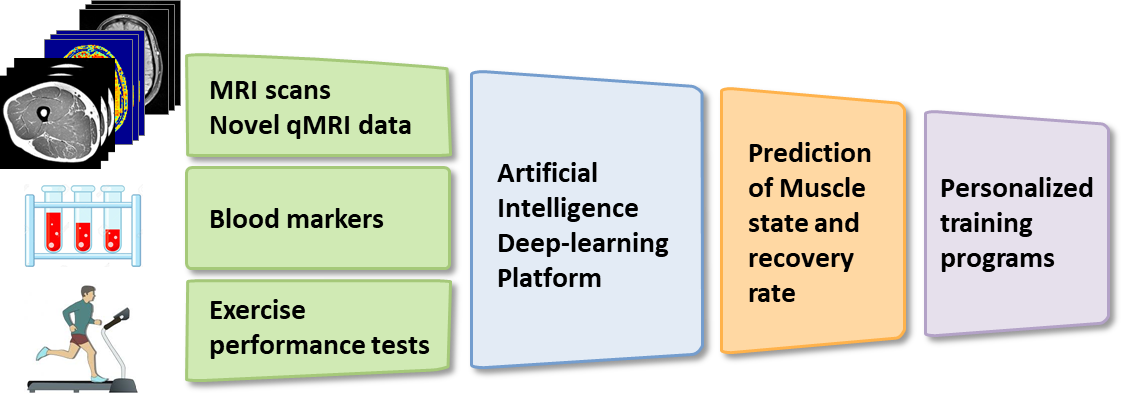Physical activity is one of the strongest beneficial behaviors for human health decreasing the risk for hypertension, diabetes and cardiovascular pathologies, and for improvement of physical function and mental health. In addition, exercise training increases whole body metabolism, alleviates inflammatory response, and particularly, can improve muscle microstructure which is strongly associated with muscle strength and physical capacity. However, the quality of evidence on the effect of exercise training across different age groups, on muscle microstructural state, and its association with blood markers concentration remains unclear. An extensive amount of data is typically collected in clinical setting. This consists of mainly blood markers for cardiometabolic risk and imaging data, and might allow to identify variety of medical states and response patterns. Yet, the amounts of collected data are so high that it remains mostly unused and underutilized. This underutilization is indeed detrimental in clinical setting, and contributes to diagnostic bias and inter-observer variability, which influence patients’ healthcare.
In our study we develop a new artificial intelligence (AI) and machine learning (ML) platform that will be able to quantify and predict muscular response and recovery curves following physical training. Using human trial, recreationally active young and middle-aged males completed downhill running protocol, while undergoing MRI scans, blood tests for cardiometabolic and inflammation markers and physical performance testes. Overall, we collected a total of ~33,600 images, including tracking muscle fibers, quantifying MRI relaxation times to assess inflammatory processes, edema or temporary swelling, and quantifying fat content. This data is processed using an AI/ML model to determine subjects’ response following the exercise. These neural networks process a mixture of all collected data and mainly new quantitative MRI biomarkers that can be accurately tracked over time, compared between subjects, and generalizable to other studies. The ensuing platform will use to design personalized training programs, but also will have the potential to improve the diagnosis and prognosis of patients suffering from pathologies that affect muscle state including heart failure, diabetes, and general muscle dystrophies and neuromuscular diseases.

Figure 1: In our research we establish a new AI platform that is built on a deep learning neural network in order to (1) process large amounts of data including ca. 33,600 MRI images; (2) integrate data from three different sources: MRI scans, numeric blood markers, and exercise performance tests; and (3) learn and predict post-training muscle recovery curves.
The ensuing framework will help in identifying general muscle response patterns and the tailoring of personalized training programs – a critical aspect for both professional and un-professional athletes, and for patients suffering from pathologies that affect muscle state such as heart failure, diabetes, and general muscle dystrophies and neuromuscular diseases.
